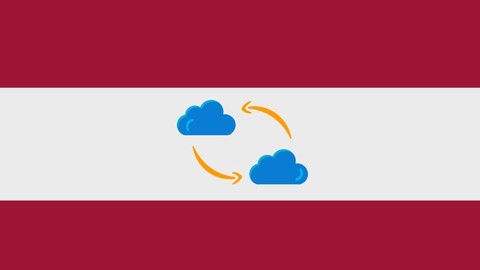OpenStack is a powerful open-source platform for building and managing private and public clouds.
It provides a flexible and scalable infrastructure for deploying applications and services, making it a popular choice for organizations of all sizes.
By learning OpenStack, you can gain valuable skills in cloud computing, virtualization, and infrastructure management, opening doors to exciting career opportunities in the rapidly growing field of cloud technology.
Whether you’re an IT professional, a developer, or simply interested in exploring the world of cloud computing, mastering OpenStack can be a valuable asset.
Finding the right OpenStack course on Udemy can be a challenge, with a plethora of options available.
You want a course that not only covers the theoretical foundations but also provides hands-on experience and practical exercises to solidify your understanding.
You need a course that’s comprehensive, engaging, and taught by experienced instructors who can guide you through the complexities of OpenStack deployment and management.
Based on our analysis of numerous OpenStack courses on Udemy, we recommend OpenStack Essentials as the best course overall.
This course provides a strong foundation in OpenStack, covering key concepts, architecture, and essential services.
It includes practical labs and exercises, allowing you to gain hands-on experience with OpenStack installation, configuration, and management.
The course’s comprehensive curriculum and practical approach make it an excellent choice for both beginners and those looking to expand their OpenStack knowledge.
However, OpenStack Essentials is just one of many excellent OpenStack courses available on Udemy.
Keep reading to discover other top-rated options that cater to specific learning styles, experience levels, and career goals.
We’ll explore courses that focus on specific OpenStack services, deployment scenarios, and advanced topics, ensuring you find the perfect course to embark on your OpenStack learning journey.
OpenStack Essentials
This OpenStack Essentials course offers a strong foundation in cloud computing, from basic concepts to hands-on OpenStack management.
You begin with a comparison of cloud computing to traditional IT, exploring different delivery models and OpenStack’s place in this landscape.
The course then guides you through a practical installation of OpenStack on VirtualBox using CentOS, a popular Linux distribution.
This hands-on approach continues as you explore core OpenStack services such as Nova for compute, Neutron for networking, and Keystone for identity management.
You will interact with OpenStack through both the user-friendly Horizon Dashboard and the more powerful command-line interface (CLI).
You learn to launch and manage instances, configure networks, and work with storage, gaining practical experience with OpenStack’s capabilities.
For instance, you discover how to set up network environments for instances, configure security settings, and manage storage using Cinder.
Understanding these individual services and their functionalities is crucial, as they form the backbone of a successful cloud infrastructure.
The course doesn’t neglect the crucial aspect of scaling for growing cloud environments.
You delve into multi-node OpenStack designs, learning about the roles of different nodes like the Controller Node, Compute Node, and Network Node.
The course provides practical experience in expanding an OpenStack cluster, including adding a compute node to an existing setup.
This equips you with the skills to handle increased demands and ensure your cloud infrastructure can grow alongside your needs.
OpenStack and NFV (TelcoCloud)
This OpenStack and NFV (TelcoCloud) course teaches you how to use OpenStack and Network Functions Virtualization to build TelcoCloud solutions.
You start with the basics of virtualization and cloud computing, including public, private, and telco cloud infrastructure.
You learn about the role of OpenStack in these environments and how it helps with challenges like cloudifying the core network and RAN.
The course then guides you through setting up your own OpenStack lab using Google Cloud Platform (GCP).
You will install the necessary tools, like the Google SDK, and learn how to use both the command-line interface (CLI) and the Horizon graphical user interface (GUI).
You explore important OpenStack components, such as compute, storage, and networking, and use them to create virtual machines, manage networks, and deploy applications.
You go beyond the basics and discover advanced OpenStack concepts such as Network Function Virtualization (NFV), Software-Defined Networking (SDN), and the differences between OVS and SRIOV for optimizing virtual machine performance.
You’ll use this knowledge to deploy and manage virtualized network functions, understand network architecture, and manage resources effectively.
Through this hands-on experience and in-depth exploration of OpenStack, you gain the skills to build, manage, and deploy cloud solutions, making you an asset in the rapidly growing field of cloud computing and NFV for telecommunications.
OpenStack Installation and Deployment
This OpenStack course takes you from OpenStack basics to deploying complex cloud infrastructures.
You’ll begin by exploring core OpenStack services, including Nova for compute power, Glance for managing images, and Neutron for networking.
You’ll discover how these services create a solid cloud platform.
The course guides you through installing and configuring OpenStack, starting with manual installation on VirtualBox virtual machines using Ubuntu Linux.
This hands-on approach gives you a deep understanding of each component.
You’ll learn to configure essential services like MariaDB for databases, RabbitMQ for messaging, and Keystone for identity management.
You’ll then explore Kolla-Ansible, a tool that automates OpenStack deployments using Ansible.
This simplifies the process and makes managing complex deployments easier.
You’ll gain experience using Vagrant to create consistent OpenStack environments for development and testing.
You’ll also learn to deploy and manage real-world applications, like a multi-node WordPress site with a load balancer, solidifying your understanding of OpenStack’s capabilities.
You’ll even explore other tools like Packstack, known for its pre-configured scripts, and Devstack, which provides a flexible environment for testing and development.
This practical experience builds your confidence in managing real-world OpenStack environments.
Preparing to Certified OpenStack Administrator (COA) Exam
This course is a solid starting point for learning about OpenStack and prepping for the Certified OpenStack Administrator (COA) exam.
You will delve into the core components of OpenStack, including Keystone for managing identities, Glance for handling images, and Nova for controlling compute services.
You’ll become comfortable working with both the Horizon dashboard, a user-friendly graphical interface, and the OpenStackClient command-line interface.
The course goes beyond theory and emphasizes building practical skills.
You get access to a virtual lab where you can put your knowledge to the test.
This lab, based on the Community version of OpenStack, offers a vendor-neutral learning experience.
You’ll gain hands-on experience managing virtual servers, networks, block storage, object storage, and even orchestrating your OpenStack deployment using Heat.
You will discover how to set up your own OpenStack Pike release lab using VirtualBox and Vagrant, giving you valuable experience with these virtualization tools.
The course features 18 lab sessions with over 120 objectives, providing ample opportunity to solidify your understanding.
It’s important to note that the course is based on a previous COA Exam version (2018) and might not fully cover the latest Stein version.
Private Cloud with OpenStack and Ceph Storage
This course reveals the secrets of building your own private cloud using OpenStack and Ceph storage.
You begin by diving into the fundamentals of both technologies, grasping their core components and how they interact.
The course then guides you through the practical steps of building a 2-node OpenStack cluster.
You will learn to configure essential services on the controller and compute nodes, including Keystone for identity management, Glance for managing images, Nova for controlling computing resources, and Neutron for networking.
Get ready to roll up your sleeves and deploy a 3-node Ceph cluster.
You will discover how to configure Ceph Monitors for cluster management, set up Ceph OSDs for storing your data, and seamlessly integrate this robust storage cluster with your OpenStack environment.
You’ll unlock the power of a truly unified cloud platform.
The course doesn’t stop at deployment; it empowers you to harness the full potential of your private cloud.
You will master the integration of OpenStack services with Ceph, including Glance for streamlined image management and Cinder for robust block storage.
You will even explore integrating Nova, allowing you to launch and manage virtual instances with the reliability and scalability of Ceph storage.
OpenStack Fundamentals: A beginners guide to OpenStack Cloud
This OpenStack Fundamentals course equips you with a solid understanding of OpenStack and its infrastructure.
You will journey through the history of OpenStack, delve into its architecture, and become familiar with its various components, including essential services like Nova for compute, Neutron for networking, and Cinder for block storage.
You will gain practical experience navigating OpenStack using both the Horizon dashboard, a user-friendly web interface for managing resources, and the command-line interface (CLI), which offers more advanced control.
The course demonstrates how to use these tools effectively, ensuring you can confidently manage OpenStack resources.
Through this course, you will not only learn about the theory behind OpenStack but also acquire practical skills through demonstrations and hands-on exercises.
You will discover how to create and manage virtual machines using Nova, control access to resources with Keystone, manage images with Glance, configure networks using Neutron, handle block storage via Cinder, and utilize Swift for object storage.
The course also provides a glimpse into other services and tools within the OpenStack ecosystem, further enriching your understanding.
IaaS Cloud Computing With OpenStack MasterClass - Part 2
This OpenStack course dives deep into the practical skills you need to build and manage your own cloud.
You’ll start with a quick recap of OpenStack fundamentals, including core services like KeyStone and Nova, from the first part of the MasterClass.
Don’t worry if you need a little refresher - this course has got you covered.
You’ll then explore the essential Neutron service, learning how it manages the flow of network traffic within your OpenStack environment.
You will install and configure Neutron components, ensuring smooth communication between your virtual machines.
Next, you’ll master the Cinder service, which handles your cloud’s storage needs.
You’ll get your hands dirty configuring storage nodes and ensuring your data is always safe and sound.
Finally, you’ll become familiar with the Swift service, OpenStack’s solution for storing large amounts of data.
You’ll discover how to configure Swift’s unique ring builders and gain the skills to manage massive datasets in the cloud.
You’ll even gain experience using both the command-line interface and the intuitive Horizon dashboard, giving you the flexibility to manage your OpenStack environment in a way that works best for you.
Install and Learn the OpenStack Cloud - for Beginners
This OpenStack course takes you from beginner to confident user.
You will start by learning about OpenStack’s architecture and how it compares to other cloud platforms like AWS.
This foundation will help you understand how OpenStack works and its place in the cloud landscape.
The course then dives into the practical setup using AWS.
You will learn to create an IAM user and role, set up networking and security settings using SSH keys, and build an EC2 image for your OpenStack deployment.
You will get to launch an EC2 Instance.
This hands-on experience will make you comfortable using AWS to create and manage your OpenStack environment.
Next, you will learn how to install OpenStack using Devstack, a tool that makes the process smooth and efficient.
You will get to use the OpenStack dashboard, where you can visually manage domains, projects, and users.
The course also teaches you how to use the OpenStack CLI, giving you the power of the command line.
You will learn troubleshooting techniques, ensuring you can handle any challenges during installation and beyond.
Finally, you will dive into hands-on exercises, creating networks and subnets, configuring security groups and rules, and launching instances with access to their consoles.
You will learn how to create and attach volumes to instances for additional storage.








